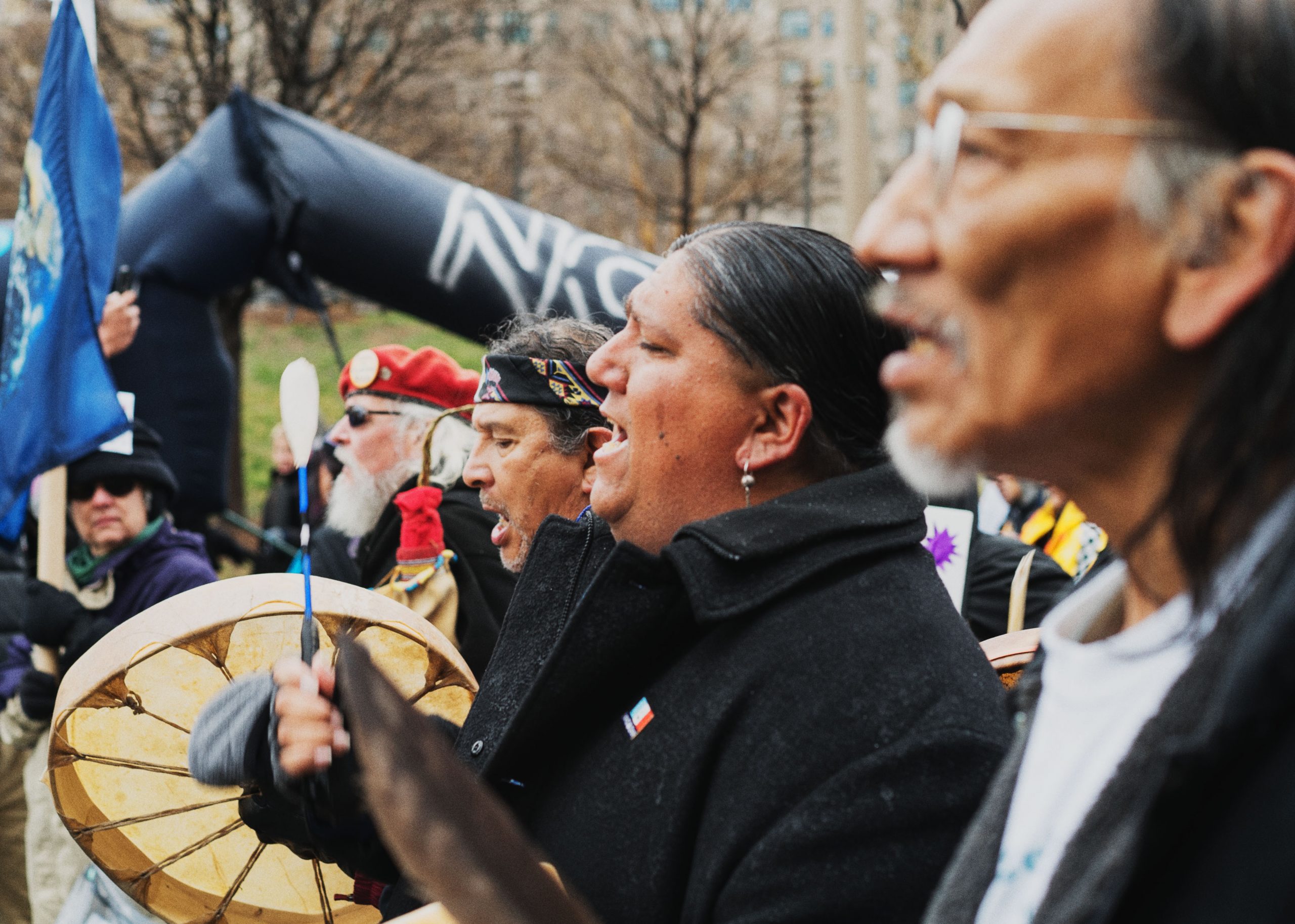
Adopted by the UN on September 13th, 2007, the United Nations Declaration on the Rights of Indigenous Peoples (UNDRIP) serves to uphold the rights that “constitute the minimum standards for the survival, dignity and well-being of the Indigenous peoples of the world.” Indigenous peoples contributed significantly to the negotiations regarding the Declaration’s content, filling a void within human rights law by incorporating the perspectives of the rights bearers themselves. The UNDRIP is a significant step towards establishing respectful relationships between nation-states and Indigenous communities, whilst also recognizing ongoing historical abuses. While the Declaration is significant in establishing Indigenous’ people’s human rights, it addresses their rights to self-determination and land only within the boundaries of their assimilation into the nation-state system. This limitation of human rights legislation has detrimental effects on Indigenous communities, who continue to suffer at the hands of colonial regimes.
Despite the historical significance of the UNDRIP, it is important to acknowledge the difference between human rights, and Indigenous rights. The introduction of the UNDRIP Declaration is framed as an appendix of the doctrine of universal human rights (Kulchyski, 2011). Human rights – which are derived from state-centric forums – do not encompass Indigenous nations’ inherent cultural and land-based rights. (Corntassel, 2012). Although human-rights based rhetoric can be useful in examining systemic injustices and tragedies such as the government inquiry into Missing and Murdered Indigenous Women and Girls (MMIWG), state-centric discourse does not encompass Indigenous values. Dr. Peter Kulchyski argues that by insisting that Indigenous rights are an extension of universal human rights, the UNDRIP does not develop or cite any individual concept from within any Indigenous worldview. This is contentious, as it posits Indigenous rights as being solely achieved through a euro-centric lens, risking disturbing Indigenous cultural values which differ from euro-centric perspectives.
While the UNDRIP is a substantial document that emphasizes the human rights of Indigenous peoples, scholars suggest that it lacks a holistic worldview which enables actualized self-determination. Self-determination is the process by which a collective people have the right to form their own political entity, and control their society and culture to the degree which they see fit. In an Indigenous context, self-determination is a crucial aspect of regaining control over land, reestablishing culture and tradition, and recovering from ongoing historical abuses. Kanien’kehá:ka scholar Taiaiake Alfred discusses how one must acknowledge the way rights-based declarations such as the UNDRIP create new recommendations and cater to governments “based on the colonial model.” Jeff Corntassel, a Cherokee scholar, expands on Alfred’s thoughts, highlighting how the UNDRIP can be perceived as a modernized form of assimilation, as Indigenous peoples are perceived as being consensual parties to the formation of the nation-state system.
The limitations of a human rights approach in addressing Indigenous land and spiritual rights can be further understood through an examination of Article 3 of the UNDRIP, which outlines the right to self-determination with the statement:“Indigenous peoples have the right to self-determination. By virtue of that right they freely determine their political status and freely pursue their economic, social and cultural development.” Although the UNDRIP seems to establish this as a principle right guaranteed to Indigenous people, the Declaration only acknowledges Indigenous peoples’ right to self-determination in the context of their conformity to the nation-state system.
Under the 1960 Declaration on the Granting of Independence to Colonial Countries and Peoples, colonized peoples have the right to free themselves from “alien subjugation, domination and exploitation.” Historically, this principle has led to the formation of various independent nation-states such as Mauritania, Nigeria, and Brunei. While the 1960 Declaration guarantees colonized peoples the right to self-government free from external influence, the UNDRIP offers far less political clout to colonized peoples of New Zealand, Australia, and North, Central and South America. Indeed, the UNDRIP emphasizes demands for states to improve their policies regarding to Indigenous peoples, but it also enforces the notion that Indigenous peoples are the subjects of the settler state which they inhabit, reducing the effectiveness and gravity of Indigenous demands for self-determination.
In continuing the discourse regarding the limitations of specific articles within the UNDRIP, it is crucial to examine one of the cornerstones of the Declaration: Article 10. Article 10 asserts that “no relocation shall take place without the free, prior, and informed consent (FPIC) of Indigenous peoples concerned and after, agreement on just and fair compensation and, where possible, with the option of return.” Although this right seems inherently clear, the vague legal status of the UNDRIP hinders its ability to be properly and consistently implemented. In December 2023, an Amnesty International report tracked the years long criminalization, discrimination and dispossession enacted upon Indigenous Wet’suwet’en land defenders resisting the Coastal GasLink (CGL) pipeline project that crossed their unceded ancestral land “without their free prior and informed consent.” This discrimination has included a court injunction granted to CGL Pipeline Ltd.by the B.C. Supreme Court and resulting in a disproportionate level of RCMP raids and surveillance. The struggle that Wet’suwet’en land defenders face contradicts Article 10. However, the UNDRIP does not have legal authority over its member states, and as a result, Indigenous communities around the world continue to fight corporate and governmental projects which threaten their subsistence and livelihood.
Moving forward, international bodies such as the UN may consider incorporating Indigenous values, knowledge, and land-based resistance alongside state-centric discourse in order to ensure that future declarations embody Indigenous self-determination and land rights to the highest degree. Indigenous peoples’ and their worldviews must not be viewed as extensions of the nation-state system, but rather as distinct and autonomous frameworks rooted in cultural, historical, and spiritual relationships with the land and community.
Edited by Éva Leblanc
The opinions expressed in this article are solely those of the author and they do not reflect the position of the McGill Journal of Political Science or the Political Science Students’ Association.
Featured image by Mike Maguire